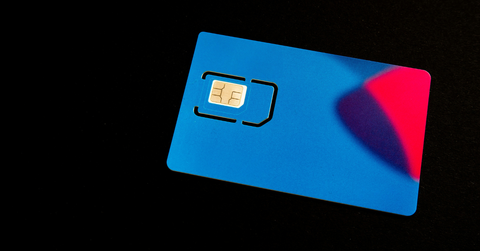How eSIM Is Revolutionizing the World of Mobile Communication

Nov. 24 2025, Published 2:46 a.m. ET
Every year, the global market for connected devices continues to expand, as technology becomes more compact and user-friendly. One such technology that is gaining popularity quickly is the eSIM, like eSIM Plus, an integrated SIM card that represents the next generation of SIM cards.
According to a recent analytical report published by OpenPR, the eSIM market is expected to continue growing steadily over the next decade, reaching approximately $45 billion in sales by 2033.
What is eSIM?
eSIM (built-in SIM card) is a technology that allows devices to connect to cellular networks without the need for physical SIM cards. Instead of a plastic card, you can use a software-controlled chip, which can be remotely updated with operator data.
This not only simplifies setup and management but also opens new possibilities for device design, especially in the areas of IoT, wearables, smartphones, and cars, as there is no longer a need for a physical SIM slot.
Areas of Application
Consumer electronics
Smartphones from major brands like Apple and Samsung have already started supporting eSIMs. The iPhone 14 for the US market has completely eliminated the need for physical SIM cards, offering only onboard ones. Similarly, major Android manufacturers are quickly adopting this technology on a large scale.
Cars and transportation
This technology offers GPS navigation, uninterrupted internet access, real-time data transfer, and remote vehicle control. Manufacturers like BMW, Audi, and Tesla are already integrating eSIM into their new models.
Smart cities and industrial IoT solutions
City infrastructure such as lighting and video surveillance requires constant connectivity. eSIM ensures reliable communication and allows for centralized equipment management in urban areas.
Travel solutions
eSIMs eliminate the hassle of switching SIM cards and ensure a smooth travel experience.
You no longer need to purchase a physical SIM card in another country—everything can be set up remotely in advance or on the spot. This provides a significant advantage for tourists and businesspeople, reducing costs and saving time.
Key Trends and Growth
According to the forecast provided in the OpenPR study, the global eSIM market is expected to grow at an annual average rate (CAGR) of approximately 16% over the next decade. The main factors behind the growth are:
Rise of the Internet of Things (IoT)
More and more devices, ranging from smartwatches to cars, require a constant connection to the network and the ability to switch between operators quickly without physical intervention.
Expansion of the Wearables Market
Devices such as smartwatches, fitness trackers, and headphones require less space for SIM cards, making eSIM an ideal solution for them.
Simplification of Devices
eSIM allows manufacturers to eliminate the need for SIM card slots, resulting in more compact, water-resistant, and reliable devices.
Support from Telecom Operators
Many global providers have begun actively integrating e-SIM technologies, providing users with the flexibility and convenience of connecting and changing tariffs.
Final Thoughts

eSIM is definitely the next stage in the evolution of mobile networks and communication technologies. By 2025, the adoption of eSIM technology is expected to be most significant in the United States, where there will be approximately 72 million IoT-connected devices. In the next decade, we can expect eSIMs to fully replace physical SIM cards in most countries.


